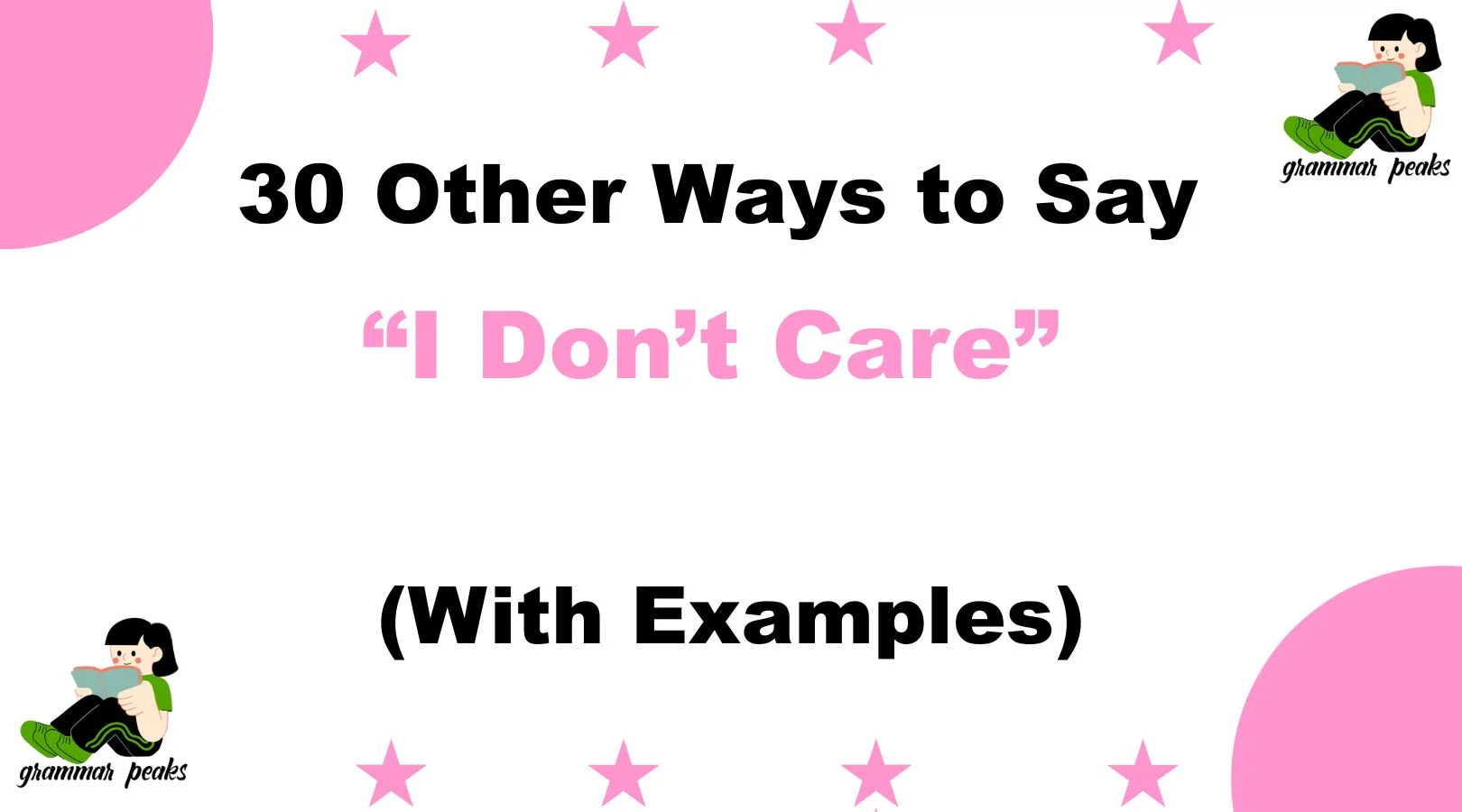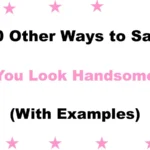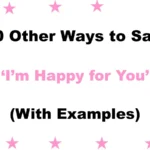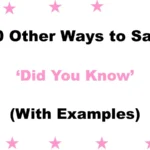There are moments when you want to express indifference—but saying “I don’t care” outright can come off as cold, dismissive, or even rude. Whether you’re in a professional setting, a casual conversation, or trying to remain neutral, the way you communicate your lack of concern or emotional investment matters. This guide provides 30 tactful, funny, polite, and even professional ways to say “I don’t care” while still maintaining respect and clarity in your communication.
What Does “I Don’t Care” Mean?
“I don’t care” is typically used to express indifference or a lack of concern or interest about a situation, opinion, or outcome. It may imply neutrality or disregard, depending on tone and context.
When to Use “I Don’t Care”
Use it when you:
- Want to show that something doesn’t affect or interest you.
- Wish to remain neutral or uninvolved in a situation.
- Are dismissing an argument or emotional reaction (use with caution).
Avoid it when:
- Sensitivity is needed.
- The other person is emotionally invested.
- You’re in a formal or professional setting (unless rephrased tactfully).
Is It Professional or Polite to Say “I Don’t Care”?
In most professional or polite contexts, saying “I don’t care” directly can seem rude or disengaged. It’s better to rephrase it with alternatives that maintain emotional intelligence, neutrality, or humor depending on the tone you want to strike.
Pros and Cons of Saying “I Don’t Care”
Pros:
- Efficient and direct.
- Shows confidence in being neutral.
Cons:
- Often sounds cold or rude.
- May escalate conflict.
- Can harm relationships if misused.
Synonyms For “I Don’t Care”
- It Doesn’t Really Matter to Me
- I’m Good Either Way
- No Preference Here
- I’m Not Invested in This
- Up to You
- That’s Not Something I’m Worried About
- It’s Not a Big Deal to Me
- Do Whatever Feels Right to You
- Makes No Difference to Me
- I’ll Go With the Flow
- I’m Fine With Whatever
- It’s All the Same to Me
- That’s Your Call
- I’m Not Bothered Either Way
- Whatever Works for You
- Not My Concern
- That’s on You
- You Decide
- I Don’t Have a Dog in This Fight
- It’s Out of My Hands
- I Don’t Have an Opinion on That
- That’s Not Something I’m Involved In
- It Doesn’t Affect Me Either Way
- I’m Staying Out of This One
- I Don’t Feel Strongly About It
- I’m Not Going to Weigh In
- I Don’t Want to Get Involved
- That’s Not Up to Me
- I Don’t Have Time to Worry About That
- I’m Not Losing Sleep Over It
1. It Doesn’t Really Matter to Me
Definition: You’re neutral about the outcome.
Explanation: Ideal for low-stakes decisions like food or movie choices.
Example: “Pizza or sushi? It doesn’t really matter to me—whatever you prefer.”
Best Use: Casual conversations, group decisions.
Worst Use: Serious topics.
Tone: Neutral, friendly.
2. I’m Good Either Way
Definition: You’re okay with any option.
Explanation: Keeps things flexible without sounding uninterested.
Example: “We can meet in the morning or afternoon—I’m good either way.”
Best Use: Scheduling, decision-making.
Worst Use: When a strong opinion is expected.
Tone: Easygoing, agreeable.
3. No Preference Here
Definition: You’re open to any outcome.
Explanation: Shows detachment in a polite way.
Example: “You pick the theme—I have no preference here.”
Best Use: Team or collaborative settings.
Worst Use: When avoiding responsibility.
Tone: Collaborative, calm.
4. I’m Not Invested in This
Definition: You’re not emotionally involved.
Explanation: Useful when clarifying your position in debates.
Example: “Honestly, I’m not invested in this—it’s your call.”
Best Use: Workplace disagreements.
Worst Use: Personal relationships.
Tone: Objective, cool.
5. Up to You
Definition: You’re letting someone else decide.
Explanation: Simple, neutral, and widely accepted.
Example: “Movie choice? Up to you!”
Best Use: Light decisions, informal chats.
Worst Use: Serious or sensitive decisions.
Tone: Flexible, casual.
6. That’s Not Something I’m Worried About
Definition: You’re not concerned with it.
Explanation: Shifts the emotional tone toward calmness.
Example: “They might not like it, but that’s not something I’m worried about.”
Best Use: Workplace tension, conflict avoidance.
Worst Use: Personal arguments.
Tone: Relaxed, indifferent.
7. It’s Not a Big Deal to Me
Definition: It holds little importance to you.
Explanation: Helps de-escalate tension.
Example: “We can change the venue—it’s not a big deal to me.”
Best Use: Scheduling, logistics.
Worst Use: When someone else clearly cares.
Tone: Nonchalant, kind.
8. Do Whatever Feels Right to You
Definition: You’re leaving the decision to someone else.
Explanation: Empowering and respectful.
Example: “I trust your judgment—do whatever feels right to you.”
Best Use: Personal decisions, emotional support.
Worst Use: Avoiding responsibility at work.
Tone: Encouraging, calm.
9. Makes No Difference to Me
Definition: The outcome has no impact on you.
Explanation: Completely neutral stance.
Example: “Coffee or tea? Makes no difference to me.”
Best Use: Casual decision-making.
Worst Use: When a clear stance is needed.
Tone: Flat, indifferent.
10. I’ll Go With the Flow
Definition: You’re open and adaptable.
Explanation: Friendly and relaxed phrasing.
Example: “Whatever the plan is, I’ll go with the flow.”
Best Use: Group planning.
Worst Use: High-pressure decisions.
Tone: Easygoing, cheerful.
11. I’m Fine With Whatever
Definition: You’re content with any choice.
Explanation: Informal way to express flexibility.
Example: “You pick the music—I’m fine with whatever.”
Best Use: Friendly, casual situations.
Worst Use: During important decision-making.
Tone: Relaxed, neutral.
12. It’s All the Same to Me
Definition: No option stands out to you.
Explanation: Suggests true indifference without being harsh.
Example: “Morning or evening meeting? It’s all the same to me.”
Best Use: Time or setting preferences.
Worst Use: In emotional discussions.
Tone: Dry, slightly detached.
13. That’s Your Call
Definition: You’re giving the other person authority.
Explanation: Shows trust or deferral of responsibility.
Example: “Want to cancel or continue? That’s your call.”
Best Use: Delegating decisions.
Worst Use: When leadership is expected.
Tone: Respectful, neutral.
14. I’m Not Bothered Either Way
Definition: You’re not affected by the outcome.
Explanation: Keeps you out of conflict or bias.
Example: “Whether we keep it or return it, I’m not bothered either way.”
Best Use: Consumer or customer choices.
Worst Use: Emotionally intense moments.
Tone: Unconcerned, light.
15. Whatever Works for You
Definition: You want what’s convenient for them.
Explanation: Helpful and cooperative alternative.
Example: “Morning or afternoon delivery? Whatever works for you.”
Best Use: Service roles, collaboration.
Worst Use: Power struggles.
Tone: Supportive, polite.
16. Not My Concern
Definition: You’re distancing yourself from involvement.
Explanation: Sets a boundary clearly.
Example: “Their drama? Not my concern.”
Best Use: Avoiding gossip or conflict.
Worst Use: Teamwork or shared responsibility.
Tone: Dismissive, blunt.
17. That’s on You
Definition: You’re leaving the responsibility to them.
Explanation: Can sound harsh if not softened.
Example: “If you skip the deadline, that’s on you.”
Best Use: Accountability statements.
Worst Use: Group failure situations.
Tone: Blunt, assertive.
18. You Decide
Definition: You’re allowing the other person to choose.
Explanation: Empowering without being careless.
Example: “You decide what works best—I’m open.”
Best Use: Collaborative decision-making.
Worst Use: Critical leadership moments.
Tone: Cooperative, calm.
19. I Don’t Have a Dog in This Fight
Definition: You have no personal stake.
Explanation: Colloquial, more common in U.S. English.
Example: “It’s between them—I don’t have a dog in this fight.”
Best Use: Neutrality in disagreements.
Worst Use: Formal or sensitive conversations.
Tone: Informal, casual.
20. It’s Out of My Hands
Definition: It’s beyond your control or influence.
Explanation: Emphasizes powerlessness or neutrality.
Example: “The decision’s final—it’s out of my hands.”
Best Use: When a decision is made by higher authority.
Worst Use: When responsibility is expected.
Tone: Resigned, formal.
21. I Don’t Have an Opinion on That
Definition: You choose to remain neutral.
Explanation: Clear and straightforward expression.
Example: “On that issue, I don’t have an opinion.”
Best Use: Avoiding conflict or debate.
Worst Use: When opinion is required.
Tone: Honest, restrained.
22. That’s Not Something I’m Involved In
Definition: You’re clarifying boundaries.
Explanation: Disassociates you respectfully.
Example: “Budget decisions? That’s not something I’m involved in.”
Best Use: Defining role clarity.
Worst Use: Team environments.
Tone: Respectful, boundary-setting.
23. It Doesn’t Affect Me Either Way
Definition: The result won’t impact you.
Explanation: Similar to indifference, but more passive.
Example: “Keep the logo or change it—it doesn’t affect me either way.”
Best Use: Project decisions outside your scope.
Worst Use: Team meetings requiring engagement.
Tone: Detached, factual.
24. I’m Staying Out of This One
Definition: You’re intentionally avoiding involvement.
Explanation: Clear choice to not take sides.
Example: “Family argument? I’m staying out of this one.”
Best Use: Conflict or drama.
Worst Use: Work-related group decisions.
Tone: Avoidant, neutral.
25. I Don’t Feel Strongly About It
Definition: You lack strong emotions on the issue.
Explanation: Polite and thoughtful way to express neutrality.
Example: “Honestly, I don’t feel strongly about it either way.”
Best Use: Debates, discussions.
Worst Use: Emotional contexts.
Tone: Balanced, soft.
26. I’m Not Going to Weigh In
Definition: You’re abstaining from giving input.
Explanation: Respectfully choosing silence.
Example: “I’ll let others discuss—I’m not going to weigh in.”
Best Use: Sensitive or controversial topics.
Worst Use: Leadership roles.
Tone: Reserved, thoughtful.
27. I Don’t Want to Get Involved
Definition: You prefer to stay detached.
Explanation: Especially useful in interpersonal conflict.
Example: “They’re arguing again, but I don’t want to get involved.”
Best Use: Avoiding drama.
Worst Use: When moral action is needed.
Tone: Guarded, self-protective.
28. That’s Not Up to Me
Definition: Someone else has authority.
Explanation: Avoids blame or expectation.
Example: “Hiring decision? That’s not up to me.”
Best Use: Deferring to leadership.
Worst Use: Escaping accountability.
Tone: Passive, deferential.
29. I Don’t Have Time to Worry About That
Definition: You’re too busy to care.
Explanation: Adds urgency or focus.
Example: “If they’re gossiping, I don’t have time to worry about that.”
Best Use: Prioritizing tasks.
Worst Use: Emotional conversations.
Tone: Dismissive, rushed.
30. I’m Not Losing Sleep Over It
Definition: You’re unbothered and relaxed.
Explanation: Slightly humorous and casual.
Example: “They didn’t like my idea? I’m not losing sleep over it.”
Best Use: Light-hearted situations.
Worst Use: Sensitive contexts.
Tone: Witty, unconcerned.
Conclusion: The Art of Saying “I Don’t Care” Without Sounding Rude
Saying “I don’t care” doesn’t have to be harsh or dismissive. Depending on the context—whether you’re in a professional meeting, a personal conversation, or a lighthearted exchange—there are smarter, softer, and more emotionally intelligent ways to express disinterest or neutrality.
The 30 alternatives we’ve covered give you the tools to maintain respect, avoid conflict, and preserve relationships, even when you genuinely don’t have a strong opinion. Choose your phrasing based on tone, intent, and situation—because how you say something often matters more than what you say.
❓ FAQs About Saying “I Don’t Care”
Q1: What’s the most polite way to say “I don’t care”?
A: Try saying “I don’t have a strong preference” or “I’m good either way.” These phrases sound neutral, cooperative, and respectful.
Q2: Is it unprofessional to say “I don’t care” at work?
A: Yes, especially in formal settings. It can seem disengaged or disrespectful. Use alternatives like “That’s not my decision” or “I trust your judgment.”
Q3: What’s a funny way to say “I don’t care”?
A: Phrases like “I’m not losing sleep over it” or “I don’t have a dog in this fight” add humor while softening indifference
Q4: When is it okay to say “I don’t care” directly?
A: Only when you’re sure the tone will be understood—such as among close friends or in emotionally detached situations. Otherwise, rephrase for clarity and courtesy.
Q5: How can I express neutrality in a group without seeming passive?
A: Say “I’m fine with whatever the team decides” or “You decide—I’ll support the outcome.” This keeps you part of the conversation without taking sides.

Mia Rose is a passionate Language Coach and Contributor at GrammarPeaks, where she specializes in practical grammar tips and language learning strategies. With a strong foundation in education and communication, Mia brings a friendly, approachable style to her writing. Her goal is to make complex grammar rules simple and usable for learners at any level, helping them grow in both confidence and fluency.





